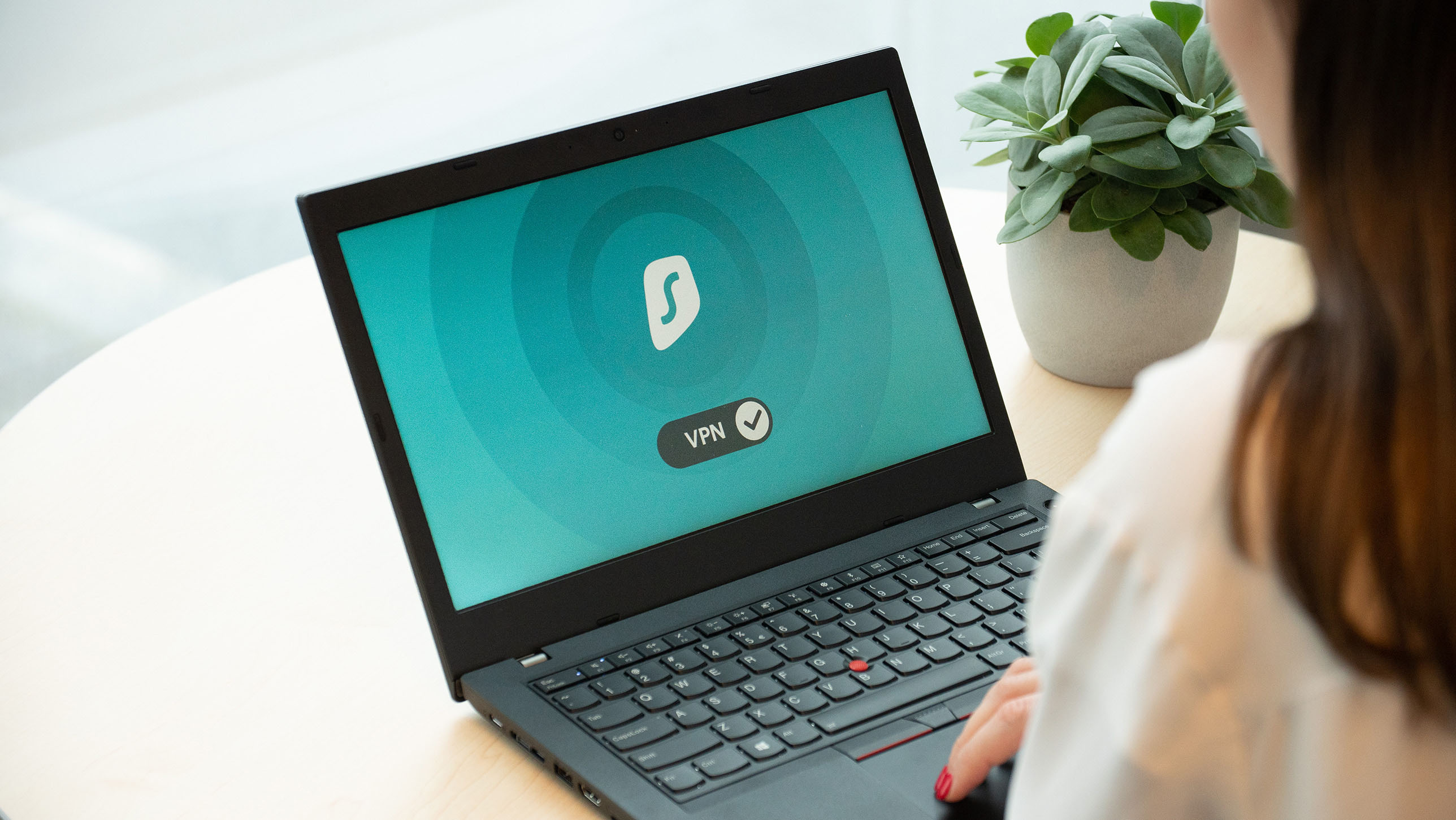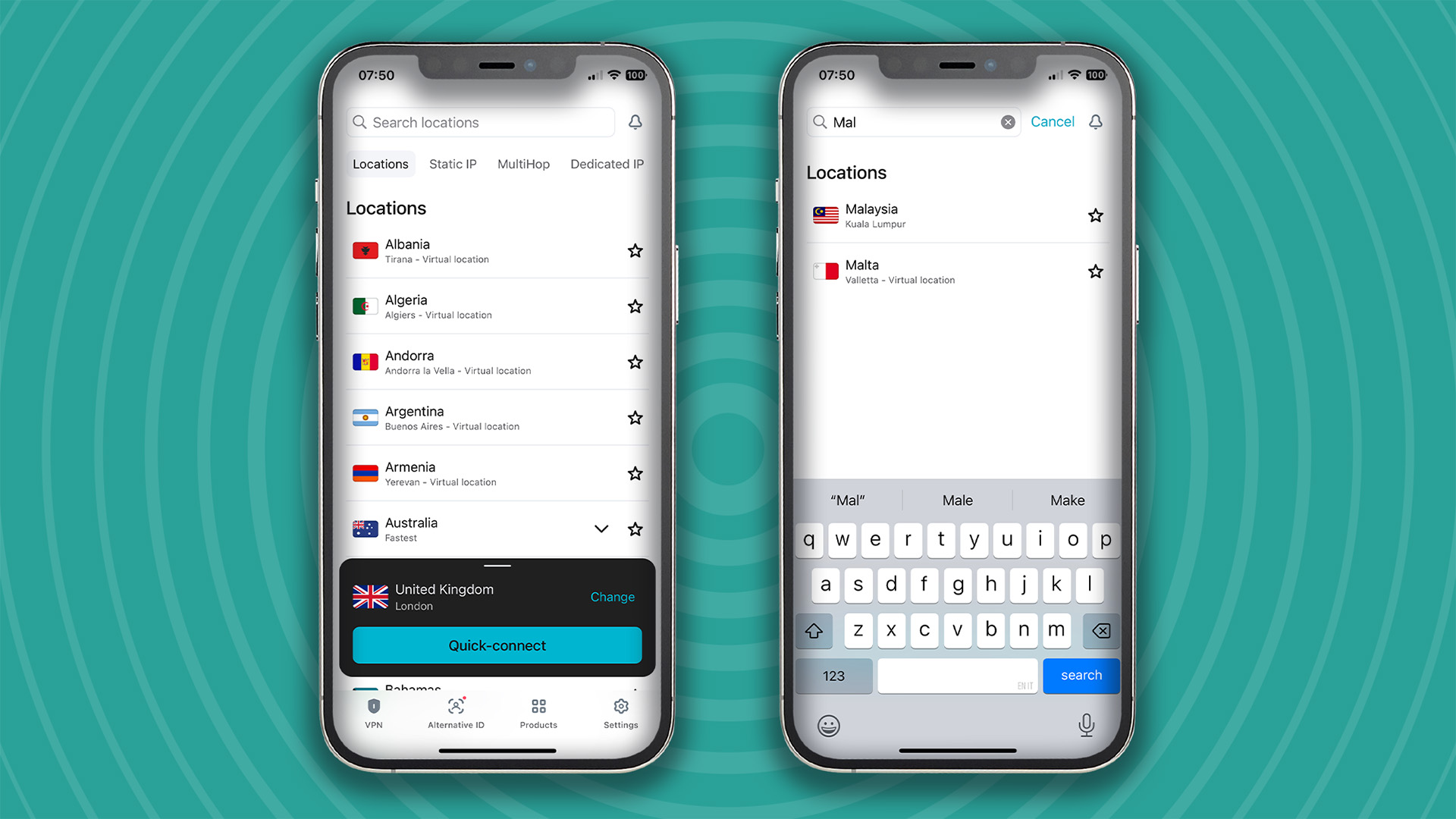Surfshark has just fixed its issue with virtual location labels
You can now see the full list of virtual servers on all its apps

Aside from impeccable security and performance, the best VPN services are also known for their commitment to transparency. In this light, Surfhsark has likely decided to label all its virtual VPN servers across all its apps to enable users to distinguish between those physically located servers easily (more on this below).
During our last round of testing, TechRadar's VPN reviewer noticed an anomaly. Among the almost 50 virtual locations, Surfshark apps displayed only 27 locations as virtual. That was suspicious, especially looking at some allegedly located in tiny territories and nations such as the Isle of Man, Jersey, Liechtenstein, Malta, and Monaco. Was Surfshark hosting all these locations in local data centers?
Investigating further, it seemed very unlikely. We also noticed, for example, that the company hosting the Malta servers has data centers in Spain and elsewhere in Europe, but not Malta itself. Plus, when we checked Surfshark’s website, we found pages that labeled some of these locations as virtual (these include Greenland, Isle of Man, and Malta), even though they’re not listed that way in the app.
TechRadar contacted Surfshark directly to flag the issue and ask for some explanations. We were happy to see the Surfshark team proactively take the problem into their own hands so promptly, taking just two days to fix their virtual location labels issue.

"Highlighting your use of virtual locations in the app is a good idea (many providers don’t even try), but it’s important the list stays accurate and up-to-date," said TechRadar Lead security reviewer Mike Williams.
While this surely looks like a mixup from the provider side, you can now see the full list of virtual servers across all Surfshark apps. Simply browse the location lists and you'll see a "Virtual location" label right next to the name of the city the IP address will make you look like you're browsing from.
A Surfshark spokesperson said the team will also review website pages as soon as possible to make sure information about virtual locations is updated and consistent.
"Normally most up-to-date server-related information is provided on our app and any updates might appear with some delay on the website. So, we always recommend using our app as the primary source for server-related information."
How Surfshark use virtual locations
To understand how and why Surfshark uses virtual locations, it's first important to know how a VPN server network works.
You can think of a VPN server as the middleman between your device and the internet. Every time you access a website, the server decrypts your traffic to send it to the intended destination. It then encrypts any information before reaching back to your device. Once you're connected to it, your IP address will appear to be the one of your chosen server instead of your actual location.
As the name implies, physical servers are physical machines stored in a data center. The IP address generally coincides with their actual location. Physical servers have a few advantages like better security (the provider is generally the owner of the data center) and performance. Yet, it isn't possible to have one actually located in some areas of the world.
This is where virtual servers come in. Here, VPN providers can use fewer machines in a data center to provide multiple virtual servers and assign each one a totally different IP location. This can help to enlarge a VPN network while cutting infrastructure costs.

A VPN (virtual private network) is security software that both encrypts your internet connections and spoofs your real IP location. These skills not only boost your anonymity online but also grant you access to otherwise geo-restricted content. VPN servers are a big part of how the software does that.
"From the user's perspective, virtual locations are functionally identical to physical ones," Surfshark's Chief Technology Officer Donatas Budvytis told me.
"Virtual locations function using dedicated physical servers located outside the target country. In other words, with virtual location a VPN server appears to be located in the given place, while its physical location is somewhere else," he added.
There are several reasons why Surfshark – and any other provider for that matter – may decide to set up a virtual server location instead.
As mentioned earlier, a virtual location can expand the VPN server network and test new locations while cutting operational costs. Despite physical servers generally being more secure and reliable, in some instances, virtual ones may result in better performance speeds than a local equivalent and less risk for the end users as their data doesn't have to pass through insecure data centers.
All in all, virtual locations allow VPN providers to offer users local IP addresses in countries with intrusive regulations while avoiding the need to comply with local laws. This is exactly why many providers went virtual in India to protect the privacy of users from the country's 2022 new data law.
Commenting on this point, Budvytis said: "Offering virtual locations allows us to provide our users with access to locations where setting up physical servers is typically challenging, often due to the lack of reliable data centers and top-tier internet service providers in particular countries."
Furthermore, we also found that the likes of NordVPN and ExpressVPN have opted for a virtual location in many of the same locations as Surfshark. This indicates a consistent approach when it comes to building a server network across the industry.
Which Surfshark servers are virtual?
Among its more than 3,200 servers dotted across 100 countries worldwide, Surfshark offers 49 virtual locations.
Below you can see the full list:
Surfshark virtual servers
- Andorra – Andorra la Vella
- Albania – Tirana
- Armenia – Yerevan
- Argentina – Buenos Aires
- Azerbaijan – Baku
- Bosnia and Herzegovina – Sarajevo
- Bangladesh – Dhaka
- Brunei Begawan
- Bolivia Sucre
- Bahamas Bahamas
- Bhutan Thimphu
- Belize Belmopan
- Costa Rica San Jose
- Algeria Algiers
- Ecuador Quito
- Egypt Cairo
- Georgia Tbilisi
- Ghana Accra
- Greenland Nuuk
- Isle of Man Douglas
- India Delhi
- India Mumbai
- Cambodia Phnom Penh
- Kazakhstan Oral
- Laos Vientiane
- Liechtenstein Vaduz
- Sri Lanka Colombo
- Morocco Rabat
- Monaco Monte Carlo
- Moldova Chisinau
- Montenegro Podgorica
- North Macedonia Skopje
- Myanmar Naypyidaw
- Mongolia Ulaanbaatar
- Macao Macao
- Malta Valletta
- Nigeria Lagos
- Nepal Kathmandu
- Panama Panama
- Peru Lima
- Philippines Manila
- Pakistan Karachi
- Puerto Rico San Juan
- Paraguay Asuncion
- Saudi Arabia Riyadh
- Uruguay Montevideo
- Uzbekistan Tashkent
- Venezuela Caracas
- Vietnam Ho Chi Minh CitY

Chiara is a multimedia journalist committed to covering stories to help promote the rights and denounce the abuses of the digital side of life – wherever cybersecurity, markets, and politics tangle up. She believes an open, uncensored, and private internet is a basic human need and wants to use her knowledge of VPNs to help readers take back control. She writes news, interviews, and analysis on data privacy, online censorship, digital rights, tech policies, and security software, with a special focus on VPNs, for TechRadar and TechRadar Pro. Got a story, tip-off, or something tech-interesting to say? Reach out to chiara.castro@futurenet.com